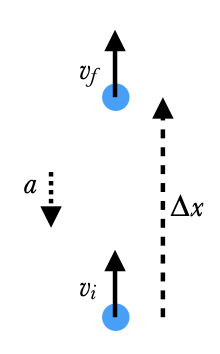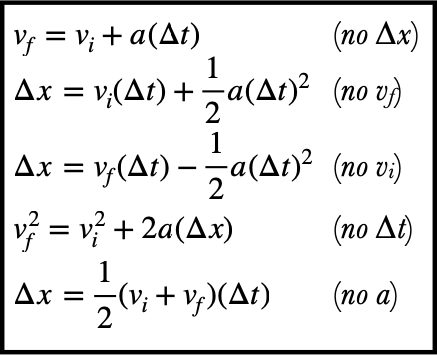21. (Problem Solving)
1DKinematics
1. Determine the Initial and Final Events
- These should be times when you are either given some piece of information, or whne you want to determine some information.

2. Draw a Diagram
- Draw the object at the initial and final events in the appropriate relative positions.
- Draw and label vectors showing the initial and final velocities (attached to the object).
- Draw and label the acceleration vector.
- Draw and label the displacement vector (an arrow from the initial to the final location).
- If you don't know the direction of a velocity or acceleration, draw the arrow in the positive direction and label it with the appropriate value.
- Define the positive direction.

3. Make a kinematics table.
- Displacement Δx
- Initial velocity vi
- Final velocity vf
- Acceleration a
- Time interval Δt
- Fill in the variables you are given; no problem solving yet!
- You may and should convert values to SI units.
- You need at least three.
- See Filling in the Variables for help in doing this.
4. Decide which variable you need to solve for.
...and write NEED next to it.

5. Choose an equation.
- If there is a variable you don't know and don't need, choose the equation from these that does not include that variable.
- Otherwise, choose the equation that includes the needed variable that looks easiest to solve.
6. Solve the equation for the needed variable.
7. Determine whether the result is sensible.
- Does it have the right units? (m for Δx, m/s for v, and m/s2 for a.)
- If there are two answers, choose the one that makes the most sense.